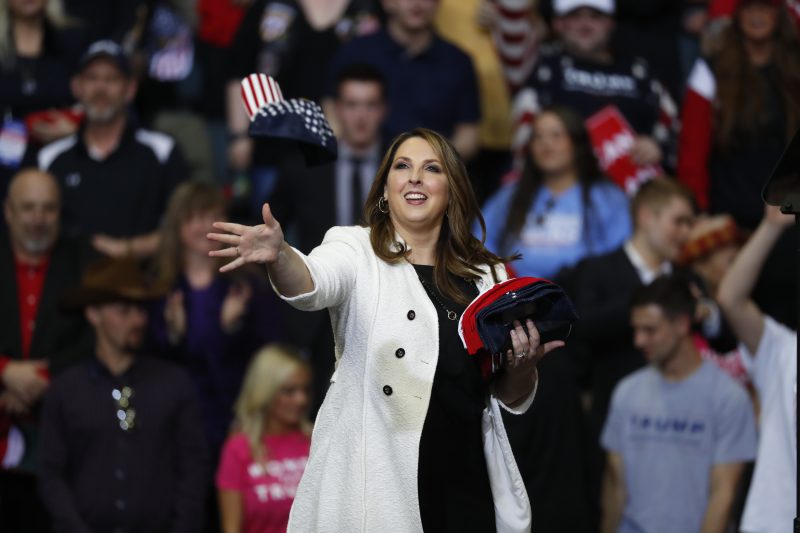There are some important parallels between the election in 2012 and the one in 2022.
Then, Republicans were very confident that they’d take the White House, thanks in part to polling that overstated support for their candidate, Mitt Romney. When Romney lost — despite facing an opponent their base disliked virulently — it triggered a lot of soul-searching. The party announced that it would conduct a review of its approach, with the aim of avoiding missed opportunities in the future.
This year, something similar happened. Republicans expected a red wave, in part because polling (often from Republican-aligned firms) showed their candidates improving as Election Day approached. When that didn’t happen, fingers were pointed and the party — now helmed by Mitt Romney’s niece, Ronna McDaniel — announced that it put together an “advisory council” aimed at “inform[ing] the Republican Party’s 2024 vision and beyond.”
One central component of that panel? Implementing one of the recommendations of the 2012 post-election autopsy.
McDaniel’s advisory council includes 12 participants, most of whom were candidates in the most recent election. Interestingly, it includes more candidates who lost in districts or states that voted for Joe Biden in 2020 than it does candidates who won in those districts this year — seemingly one aspect of what you might want from a group looking to build a GOP that can expand the party’s footprint.
It includes failed Arizona Senate candidate Blake Masters, for example — someone who underperformed relative to 2020 results in the state but also underperformed relative to other Republican candidates in the same election in the same state. Granted, he was running against a relatively popular incumbent, but he is still not someone you would expect to be the poster child for a new vision of party success. Except, of course, that he’s a protege of the endlessly wealthy Peter Thiel and except that he has a devout following with a party-skeptical, far-right and often younger wing of the electorate.
What’s most striking about the group, though, is its diversity. It includes two Hispanic Americans, one man and one woman. There’s Rep.-elect John James (R-Mich.), a Black man. There’s Rep. Michelle Steel (R-Calif.), an Asian woman. The group is half men and half women; it is also just shy of half-non-White.
“These individuals will meet regularly with Chairwoman McDaniel,” the GOP’s news release about the group read, “to advise on continuing the success we saw in 2022, such as growing the party with Hispanic, Asian, and Black voters.”
That specific outcome was a central part of the 2012 autopsy.
Called the “Growth & Opportunity Project” (get it?), that report was compiled by a team of advisers who assessed how the party was contacting voters and expanding its base. I spoke with one member of the team, Sally Bradshaw, as I was researching a book; she explained that one of her tasks was to figure out how to modernize the party’s voter data, which it did.
It also included a recommendation that the party do better at communicating with non-White voters.
“We need to campaign among Hispanic, black, Asian, and gay Americans and demonstrate we care about them, too,” the 2012 report states. “We must recruit more candidates who come from minority communities.” It recommended specific tactics: engaging organizations focused on non-White groups, for example, and engaging with historically Black colleges and universities. It also recommended building a deeper bench of women who could act as party surrogates.
Fundamentally, the document suggested that a party focused as heavily on White Americans as the GOP had been couldn’t win in the future. This was a common understanding of the political state of play after 2012, when Barack Obama had won election for president twice in a row on the strength of a broad, diverse coalition including heavy turnout from non-White and young voters. Without eating into those advantages, one line of argument went, the party couldn’t succeed in the future.
What happened to the party next is also instructive. Donald Trump emerged from outside the party in 2015 and went the other direction: pushing hard on boosting engagement from White voters, largely by echoing their concerns about the diminished cultural status perceived by White Republicans. He focused on Hispanics and immigrants specifically as targets of his rhetoric. It was an approach that Bradshaw and many others found baffling; she ended up leaving the party.
There was some hope among Republicans after the 2020 election, in which Trump improved his numbers with Black and Hispanic voters, that the party’s existing path could eat into the Democratic advantages with non-Whites. The 2022 midterms, though, seemed to dampen that idea. So old ideas become new again: figure out how to appeal to Black, Hispanic and Asian voters by putting together an advisory committee.
The timing is remarkable. At the moment, the candidate leading in nearly every national poll of the 2024 Republican nominating contest is none other than Trump, who has shown literally no obvious interest in moderating his 2016 rhetoric about immigration and crime. It’s very possible, then, that the party will once again follow a surprisingly poor performance with a period of reflection centered on reaching out beyond the heavily White core of its membership — only to see Trump stomp all over it.
The only question is which member of the Romney family will organize the 2032 GOP autopsy.

